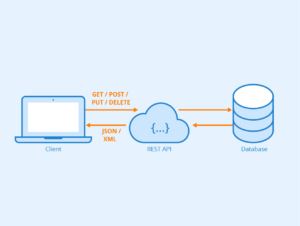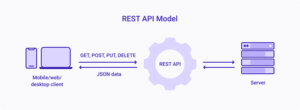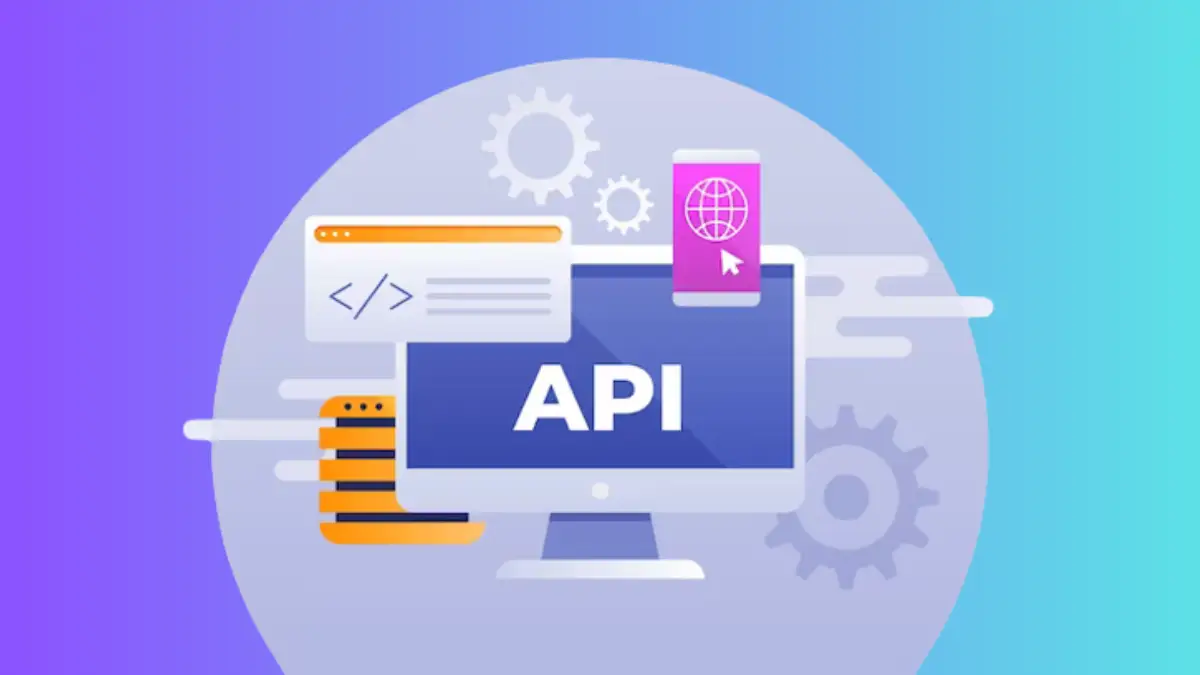Do You Know What is API? What is REST API? APIs are a type of software API that allows you to access data from a website or application.
Apis are a type of software API that allows you to access data from a website or application. They are used to provide access to data that would otherwise be locked away in the application’s code.
What is API?
An API is a type of software API that allows you to access data from a website or application. They are used to provide access to data that would otherwise be locked away in the application’s code.
Why Use an API?
There are many reasons why you might want to use an API. Apis can provide you with access to data that would be difficult or impossible to get hold of directly. They can also help you build integrations with third-party applications, giving your business a wider reach. Finally, APIs can help you build better software by making it easier for
How Do Apis Work?

An API is a set of rules and protocols that allow one program to interact with another. This means that you can create an interface between your software and any third-party application or service. This way, you can easily access and use the data and features offered by these external applications.
There are several reasons why you might want to use an API. For example, an API can provide you with access to data that would be difficult or impossible to get hold of directly. It can also help you build integrations with third-party applications, giving your business a wider reach. Finally, APIs can help you build better software by making it easier for you to access and use the data and features offered by external applications.
What are the Benefits of Using an API?
There are many benefits to using an API. Apis can provide you with access to data that would be difficult or impossible to get hold of directly. They can also help you build integrations with third-party applications, giving your business a wider reach. Finally, APIs can help you build better software by making it easier for you to access and use the data and features offered by external applications.
There are several reasons why you might want to use an API.
- An API can provide you with access to data that would be difficult or impossible to get hold of directly. For example, an API can allow you to access data stored in a third-party application.
- An API can help you build integrations with third-party applications, giving your business a wider reach. For example, an API can allow you to integrate with a social media platform or a payments system.
- Finally, an API can help you build better software by making it easier for you to access and use the data and features offered by external applications. For example, an API can allow you to access data stored in a third-party application or make a call to a third-party service.
There are several ways to find an API. You can search for an API on a website or in a directory. You can also ask your business partners or other experts for recommendations.
Once you have found an API, you need to decide what kind of access you want to grant the API. You can allow API access to all of your data or just specific parts of your data. You can also decide how long the API will be available and how much money you will charge for access.
There are a number of ways to use an API. You can use the API to access data that you already have or to get data that you don’t have access to directly. You can also use the API to build integrations with third-party applications, giving your business a wider reach.
How Can You Use Apis in Your Business?

An API (application programming interface) is a set of rules that developers use to access the functionality of other applications. APIs can provide access to data, functionality, or services from external applications. They can also be used to build integrations with third-party applications. In short, an API can help you do more with the data and features offered by other applications.
There are a number of ways that you can use APIs in your business. Here are four examples:
Access External Data
APIs can help you access data that is not available directly from the applications that you use. This can be useful if you want to access data from different sources or if you want to build integrations with third-party applications.
Build Integrations
With Third-Party Applications, APIs can also be used to build integrations with third-party applications. This can give your business a wider reach and make it easier for you to access and use the data and features offered by external applications.
Make It Easier To Access And Use External Data
APIs can make it easier for you to access and use the data and features offered by external applications. This can be useful if you want to build better software or if you want to integrate your business with other applications.
Improve Your Software By Making It Easier To Access And Use Data
APIs can improve your software by making it easier for you to access and use the data and features offered by external applications. This can be useful if you want to build better software or if you want to integrate your business with other applications.
Once you have decided what data you want to access, you need to decide how you will use the API. You can use the API to access data that you already have or to get data that you don’t have access to directly. You can also use the API to build integrations with third-party applications, giving your business a wider reach.
Finally, you can use the API to build better software by making it easier for you to access and use the data and features offered by external applications.
What is REST API?

REST API stands for Representational State Transfer. It is a way of creating web APIs that use the same principles as the HTTP protocol. This makes it easy for developers to create APIs that can be used by other applications. REST API also makes it easy for businesses to exchange data with other businesses or systems.
What are the benefits of using a REST API?
There are many benefits to using a REST API. These benefits include the following:
- It is easy to create and use a REST API.
- It is easy to access and use data.
- It is easy to build integrations with other applications.
- It is easy to exchange data with other businesses or systems.
- It is easy to keep track of data changes.
- It is easy to audit the use of data.
- It is easy to scale the API.
How do I create a REST API?
The first step in creating a REST API is to decide what data you want to access. Next, you will need to decide how you want to access this data. You can use the HTTP protocol or the REST API protocol. Finally, you will need to create the code that controls access to the data.
How do I use a REST API?
To use a REST API, you will first need to create an account with the service that offers the API. Next, you will need to register your application with the service. Finally, you will need to find and register the routes that control access to the data.
What are the risks of using a REST API?

There are several risks associated with using a REST API. These risks include the following:
- The security of the data may not be guaranteed.
- The data may not be accurate or up-to-date.
- The data may not be accessible at all times.
- The data may be subject to abuse or misuse.
- The code that controls access to the data may not be reliable or secure.
- The code that controls access to the data may be incompatible with other applications or systems.
- There is no guarantee that the service that offers the API will continue to exist.
There are also several benefits to using a REST API.
These benefits include the following:
- The code that controls access to the data can be easily modified or updated.
- The code that controls access to the data can be easily integrated into other applications or systems.
- The data can be accessed from anywhere in the world.
- The data can be accessed by any authorized user.
- The data can be accessed quickly and easily.
- The data can be accessed without having to contact the service provider directly.
- The data can be accessed without having to understand the code that controls access to the data.
- The data can be accessed without having to understand the server architecture.
- The data can be accessed without having to understand the programming language.
- The data can be accessed without having to understand the database schema.
- The data can be accessed without having to understand the server and network configuration.
There are a few things to consider when deciding whether or not to use a REST API.
The code that controls access to the data may not be reliable or secure. The data may be inaccurate or unavailable. The service that offers the API may not be stable or compatible with other applications or systems. The cost of using the API may be high.
These include the following:
- The security of the data.
- The accuracy and availability of the data.
- The compatibility of the code that controls access to the data with other applications or systems.
- The stability of the service that offers the API.
- The cost of using the API.
- The ease of using the API.
- The size and complexity of the API.
- The number of users that will be using the API.
- The speed of the API.
- The reliability of the API
API Testing
When developing an API, it is important to test it thoroughly to ensure that everything works as expected. There are a few things that you should consider when testing an API:
- The code that controls access to the data should be tested thoroughly. Make sure that all the functionality is working as expected, and that any errors or problems are identified and corrected.
- The server and network configuration should be tested. Make sure that the API can be accessed from anywhere in the world, and that the connection is stable and reliable.
- The database schema should be tested. Make sure that all the data fields are correctly defined, and that the data is correctly populated.
- The code that accesses the data should be tested. Make sure that all the functionality is working as expected, and that any errors or problems are identified and corrected.
- The user interface should be tested to make sure that all the functionality is working as expected, and that any errors or problems are identified and corrected.
- The API should be stress-tested to make sure that it can handle large loads without crashing.
Testing an API can be a time-consuming process, but it is important to ensure that the API works correctly and is reliable.
Conclusion:
Apis are a great way to access data from websites and applications. They offer several benefits for businesses, including increased efficiency and reduced costs. You can use APIs in your business by creating an API Gateway or by using an API Manager.
Read This:
